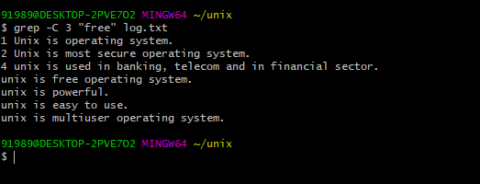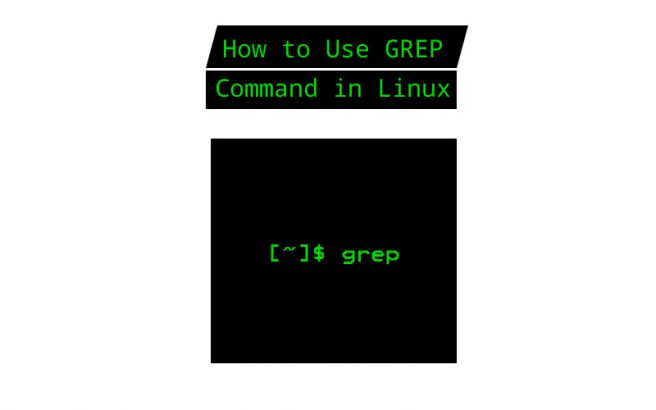
Gzip -cd foo.gz | grep -label=foo -H 'some pattern' Suppress error messages about nonexistent or unreadable files.
#Windows grep command portable#
Portable shell scripts typically can redirect standard output to Portability note: Solaris 10 grep lacks -q Quiet do not write anything to standard output.Įxit immediately with zero status if any match is found, Output lines use the same delimiters as input, and delimiters are nullīytes if -z ( -null-data) is also used (see Other Options). With each such part on a separate output line. Print only the matched non-empty parts of matching lines, Grep stops after outputting num non-matching lines. When the -v or -invert-match option is also used, Grep does not output a count greater than num. When the -c or -count option is also used, When grep stops after num selected lines, This enables a calling process to resume a search.įor example, the following shell script makes use of it: Regardless of the presence of trailing context lines. Just after the last selected line before exiting, Grep ensures that the standard input is positioned If the input is standard input from a regular file, If num is zero, grep stops right away without reading input.Ī num of −1 is treated as infinity and grep Scanning each input file stops upon first match. No output would normally have been printed. Instead print the name of each input file from which If no -color option is given, the default is -color=never. Plain -color is treated like -color=auto Suggests that the terminal supports colors. With a terminal device and the TERM environment variable’s value WHEN is ‘ always’ to use colors, ‘ never’ to not useĬolors, or ‘ auto’ to use colors if standard output is associated Green byte offsets, cyan separators, and default terminal colors otherwise. The colors are defined by the environment variable GREP_COLORSĪnd default to ‘ ms=01 31:mc=01 31:sl=:cx=:fn=35:ln=32:bn=32:se=36’įor bold red matched text, magenta file names, green line numbers, Groups of context lines) with escape sequences to display them in color Surround matched non-empty strings, matching lines, context lines,įile names, line numbers, byte offsets, and separators (for fields and Instead print a count of matching lines for each input file. Next: Output Line Prefix Control, Previous: Matching Control, Up: Command-line Options 2.1.3 General Output Control ¶ -c -count Pattern and then surrounding it with ‘ ^’ and ‘ $’. Select only those matches that exactly match the whole line.įor regular expression patterns, this is like parenthesizing each '\'’ cannot match any line because ‘ is not a ‘ grep -w matches a line containing only ‘ ‘ grep This option has no effect if -x is also specified.īecause the -w option can match a substring that does notīegin and end with word constituents, it differs from surrounding a Word constituent characters are letters, digits, and the underscore. Or followed by a non-word constituent character. Or preceded by a non-word constituent character. The test is that the matching substring must either Select only those lines containing matches that form whole words. Invert the sense of matching, to select non-matching lines. This option is useful for passing to shell scripts thatĪlready use -i, in order to cancel its effects because the

y is an obsolete synonym that is provided for compatibility.ĭo not ignore case distinctions in patterns and input data. SHARP S) even though lowercasing the latter yields the former.


Two-character string “SS” but it does not match “SS”, and it might (U+00DF, LATIN SMALL LETTER SHARP S) is normally capitalized as the Another example: the lowercase German letter “ß” This unusual character matches “S” or “s” even though uppercasing SMALL LETTER LONG S) in many locales, and it is unspecified whether Unusual lowercase counterpart “ſ” (Unicode character U+017F, LATIN Although this is straightforward when lettersĭiffer in case only via lowercase-uppercase pairs, the behavior is So that characters that differ only in case Ignore case distinctions in patterns and input data, The empty file contains zero patterns, and therefore matches nothing. When file is ‘ -’, read patterns from standard input. e ( -regexp) option, search for all patterns given. Typically patterns should be quoted when grep is used f ( -file) option, search for all patterns given. If this option is used multiple times or is combined with the Patterns separate each pattern from the next. Use patterns as one or more patterns newlines within Next: General Output Control, Previous: Generic Program Information, Up: Command-line Options 2.1.2 Matching Control ¶ -e patterns -regexp= patterns


 0 kommentar(er)
0 kommentar(er)
